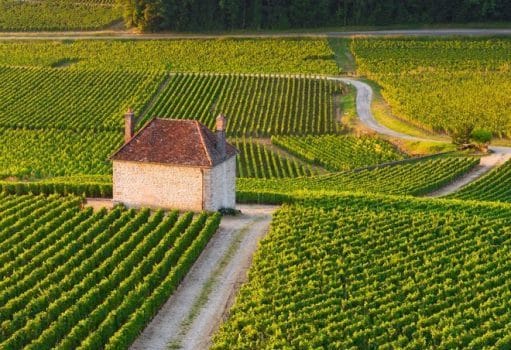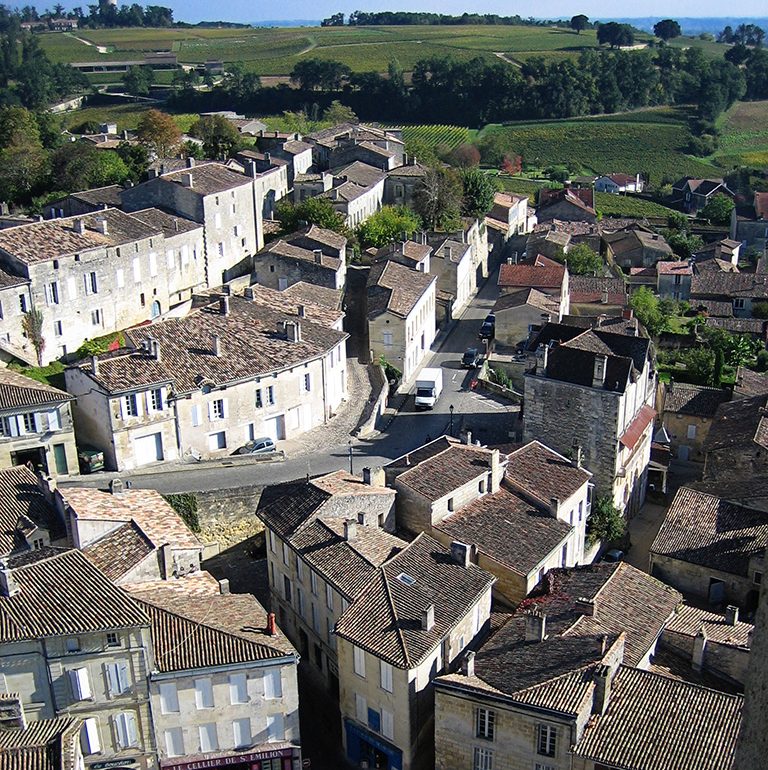These nine communes of St Emilion have remained unchanged since that time in defining the limit of what is included as a St Emilion vineyard. The total area covers 7,846 ha of which about 5,400 ha are St Emilion vineyards:
- St-Émilion,
- Saint-Christophe-des-Bardes,
- Saint-Hippolyte,
- Saint-Étienne-de-Lisse,
- Saint-Laurent-des-Combes,
- Saint-Pey-d’Armens,
- Saint-Sulpice-de-Faleyrens,
- Vignonet,
- Libourne (a part of it)
According to UNESCO http://whc.unesco.org/: “before viticulture predominated, medieval and Renaissance castles were built on dominant sites as seigniorial residences. Examples are the 13th-century Château Laroque (Saint-Christophe-des-Bardes), the 14th-century Château de Preyssac (Saint-Étienne-de-Lisse), and the 16th-century Château Ferrand (Saint-Hippolyte). By contrast, the ‘vineyard’ castles are located at the centre of their respective domains. They range in date from the mid-18th century (Château Ausone, Château Canon) through the early 19th century (Château Cheval-Blanc, Château Mondot) to the late 19th and early 20th centuries (Château Laroze, Château La Gaffalière).”
The quality of the St Emilion vineyards have been underwritten by the confluence of the local micro-climate, the soils, the bedrock and the grape varietals. The topography is characterized by a band of limestone formed in shelves that criss-cross the landscape. According to Larousse Encyclopedia of Wine; “the scarp slope forming the edge of this limestone faces broadly south. The plateau and the slope (the côte) provide the best vineyard sites. Beneath the slope is a zone of sandy gravel, topped in places by river borne sand. Vines grow here but the chateaux are not in the first rank…. To the north the plateau slopes gently down to the Barbanne stream. Here the underlying rock is covered with sand and gravel. Some excellent vineyards and many good one are sited here. The wine made on the sand-gravel is typically softer and earlier to mature than that from the limestone plateau and côte.” What this means is that it is generally agreed that although great wines can be produced anywhere in St Emilion there is nonetheless a hierarchy that can be seen both in the classifications and the communes of St Emilion. The quality hierarchy follows more or less the order of the St Emilion Commune list we have given above.
During the 12th and 13th centuries the St Emilion vineyards produced what were known as “vins honorifiques” (which in England were known as “Royal wines”) since they were used as gifts to kings VIPs. So even at this early stage there was evidence that St Emilion vineyards were establishing themselves as world class. The Jurade monitored the quality of the wine of St-Emilion and through its oversight it granted its approval to a limited number of wines. This would have been the first classification system for the Saint Emilion Vineyards.
In 1867 the St Emilion vineyards were awarded the Gold Medal for their wines at the Universal Exhibition. Then in 1889 at the Universal Exhibition they won the highest award, known as the “Grand Prix Collectif.”
According to the Conseil des vins de Saint-Emilion www.vins-saint-emilion.com The year 1954 saw the creation of a new classification system ranking the wines of the St Emilion vineyards. These included:
- St-Emilion,
- St-Emilion Grand Cru,
- St-Emilion Grand Cru Classé
- St-Emilion Premier Grand Cru Classé.
Whilst the first classification of Saint Emilion wines was carried out in 1955 it was thereafter revised in 1969, 1986, 1996, 2006 and 2012. The next classification will be in 2022.

